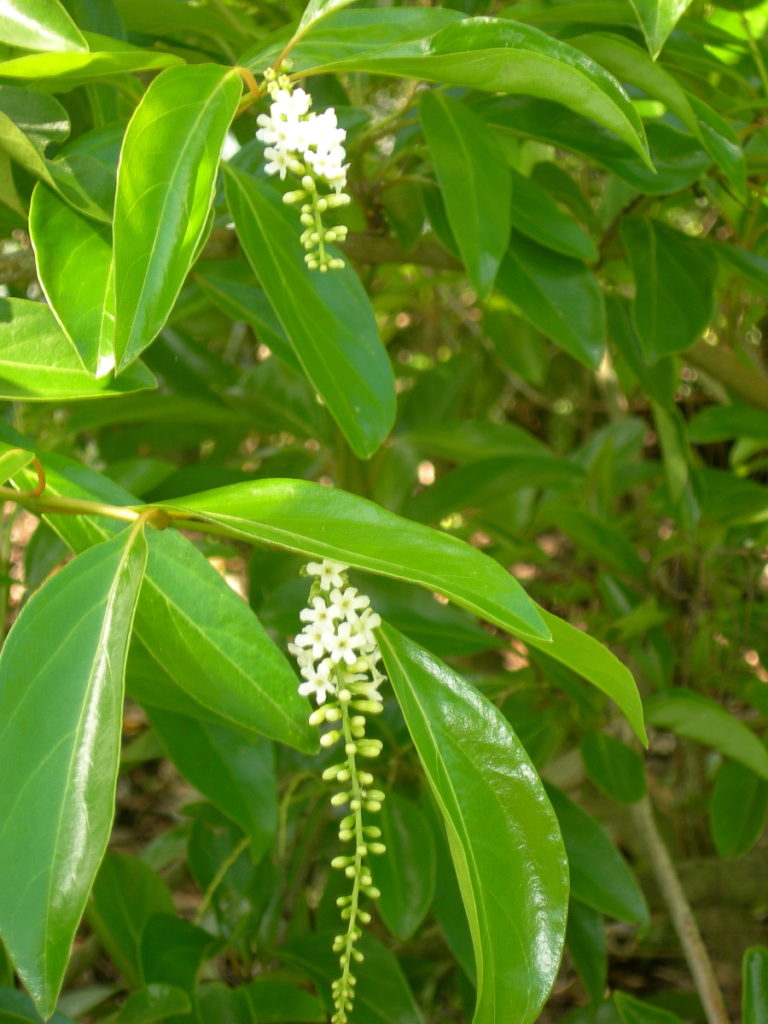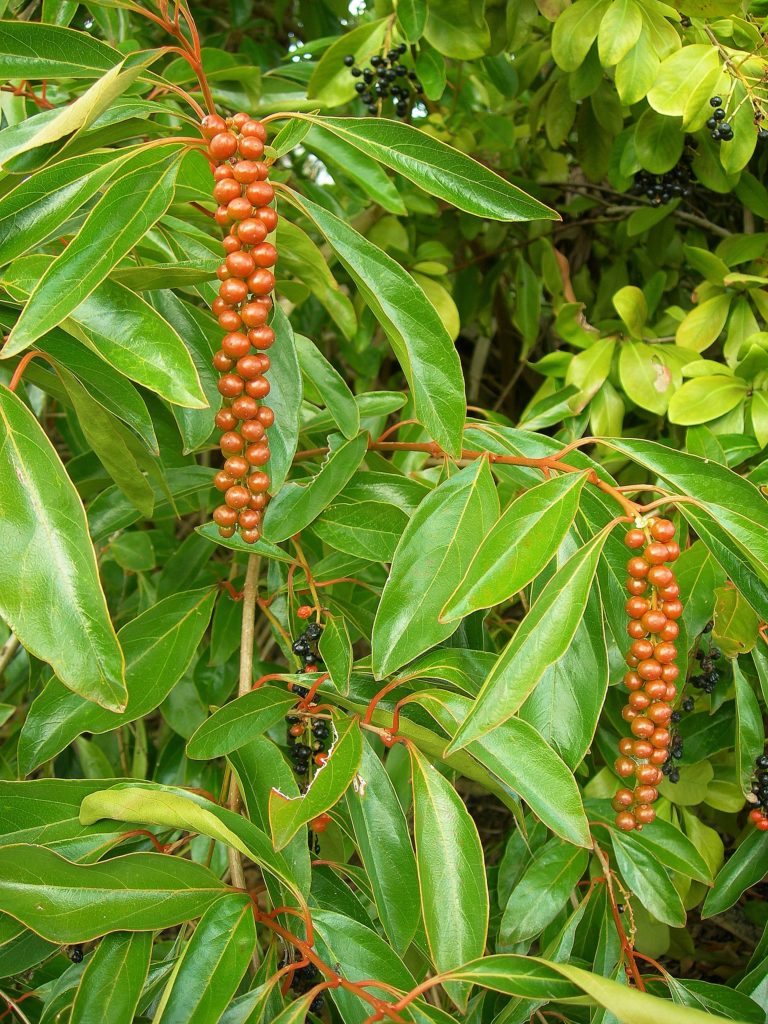A walk around the neighborhood this week revealed a few plants that are past prime. Trees and shrubs indeed get old, out-grow the allotted space, or succumb to less-than-perfect growing conditions. When any of these things occur, it is better to remove the failing plant and install something different. Granny Cloud did not put up with a feeble plant, and you shouldn’t either. Fiddlewood is a pretty shrub for the landscape; consider this native plant when replacing old shrubs.

Fiddlewood (Citharexylum spinosum) is a pretty, tough, drought-tolerant plant to use as a shrub or tree in sunny landscapes. 
Fiddlewood fruits look like grapes hanging on the vine. They are eaten by wildlife and have two stones or seeds inside.
Florida Fiddlewood (Citharexylum spinosum) is a pretty native plant worth space in the landscape. It is classified in the same family as Lantana, Garden Verbena, Duranta, Queen’s Wreath Vine, and Porterweed. It is found in Florida from Brevard County south through the Keys. The natural range extends through the Caribbean Islands into South America. The common name, Fiddlewood, comes from the use of its wood in the making of stringed instruments.
A slow grower, Fiddlewood typically reaches 15 to 25 feet tall, though it is easily pruned. The leaves are shiny, large, pointed at both ends, and have orange stalks or petioles. The leaves are usually evergreen but in some years may turn orange or yellow and fall. If the leaves fall, they are replaced quickly. The flowers are small, with 5 petals on drooping spikes, and are very fragrant. Male and female flowers are borne on separate plants. The small round fruits that follow the flowers are orange to brown, eventually turning dark.
Full sun is the best choice for Fiddlewood though partial shade is tolerated. The soil should be well-drained; Fiddlewood is drought tolerant once established though regular moisture provides the best growth and look. If planted away from the strong winds on the dune, Fiddlewood is salt tolerant.
This attractive native plant is a good choice for hedges, shrubbery borders, and small specimen trees. It typically grows with an irregularly shaped crown and blooms and fruits throughout the year, with heavier flowering in spring and summer. It provides shelter, food, and nesting sites for a wide range of wildlife and is a nectar source for butterflies.
Though few pests bother Fiddlewood, it is host to the native Epicorsia or Fiddlewood Leafroller moth. The larva or caterpillars hatch, munch on the foliage, sometimes to the point of defoliation, and then roll the leaves for protection and pupation. The caterpillar damage and defoliation do not harm the plant, which quickly replaces the leaves. Some experts report that the timing of the caterpillar hatch often occurs during baby bird season, providing a much-needed food source during the dry spring and early summer.
This article first appeared in the Treasure Coast Newspapers.
Leave a Reply